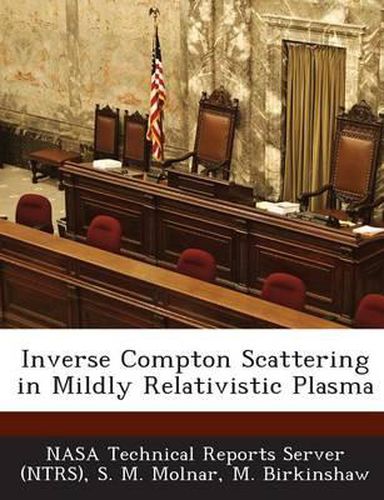Readings Newsletter
Become a Readings Member to make your shopping experience even easier.
Sign in or sign up for free!
You’re not far away from qualifying for FREE standard shipping within Australia
You’ve qualified for FREE standard shipping within Australia
The cart is loading…






We investigated the effect of inverse Compton scattering in mildly relativistic static and moving plasmas with low optical depth using Monte Carlo simulations, and calculated the Sunyaev-Zel'dovich effect in the cosmic background radiation. Our semi-analytic method is based on a separation of photon diffusion in frequency and real space. We use Monte Carlo simulation to derive the intensity and frequency of the scattered photons for a monochromatic incoming radiation. The outgoing spectrum is determined by integrating over the spectrum of the incoming radiation using the intensity to determine the correct weight. This method makes it possible to study the emerging radiation as a function of frequency and direction. As a first application we have studied the effects of finite optical depth and gas infall on the Sunyaev-Zel'dovich effect (not possible with the extended Kompaneets equation) and discuss the parameter range in which the Boltzmann equation and its expansions can be used. For high temperature clusters (k(sub B)T(sub e) greater than or approximately equal to 15 keV) relativistic corrections based on a fifth order expansion of the extended Kompaneets equation seriously underestimate the Sunyaev-Zel'dovich effect at high frequencies. The contribution from plasma infall is less important for reasonable velocities. We give a convenient analytical expression for the dependence of the cross-over frequency on temperature, optical depth, and gas infall speed. Optical depth effects are often more important than relativistic corrections, and should be taken into account for high-precision work, but are smaller than the typical kinematic effect from cluster radial velocities.
$9.00 standard shipping within Australia
FREE standard shipping within Australia for orders over $100.00
Express & International shipping calculated at checkout
Stock availability can be subject to change without notice. We recommend calling the shop or contacting our online team to check availability of low stock items. Please see our Shopping Online page for more details.
We investigated the effect of inverse Compton scattering in mildly relativistic static and moving plasmas with low optical depth using Monte Carlo simulations, and calculated the Sunyaev-Zel'dovich effect in the cosmic background radiation. Our semi-analytic method is based on a separation of photon diffusion in frequency and real space. We use Monte Carlo simulation to derive the intensity and frequency of the scattered photons for a monochromatic incoming radiation. The outgoing spectrum is determined by integrating over the spectrum of the incoming radiation using the intensity to determine the correct weight. This method makes it possible to study the emerging radiation as a function of frequency and direction. As a first application we have studied the effects of finite optical depth and gas infall on the Sunyaev-Zel'dovich effect (not possible with the extended Kompaneets equation) and discuss the parameter range in which the Boltzmann equation and its expansions can be used. For high temperature clusters (k(sub B)T(sub e) greater than or approximately equal to 15 keV) relativistic corrections based on a fifth order expansion of the extended Kompaneets equation seriously underestimate the Sunyaev-Zel'dovich effect at high frequencies. The contribution from plasma infall is less important for reasonable velocities. We give a convenient analytical expression for the dependence of the cross-over frequency on temperature, optical depth, and gas infall speed. Optical depth effects are often more important than relativistic corrections, and should be taken into account for high-precision work, but are smaller than the typical kinematic effect from cluster radial velocities.